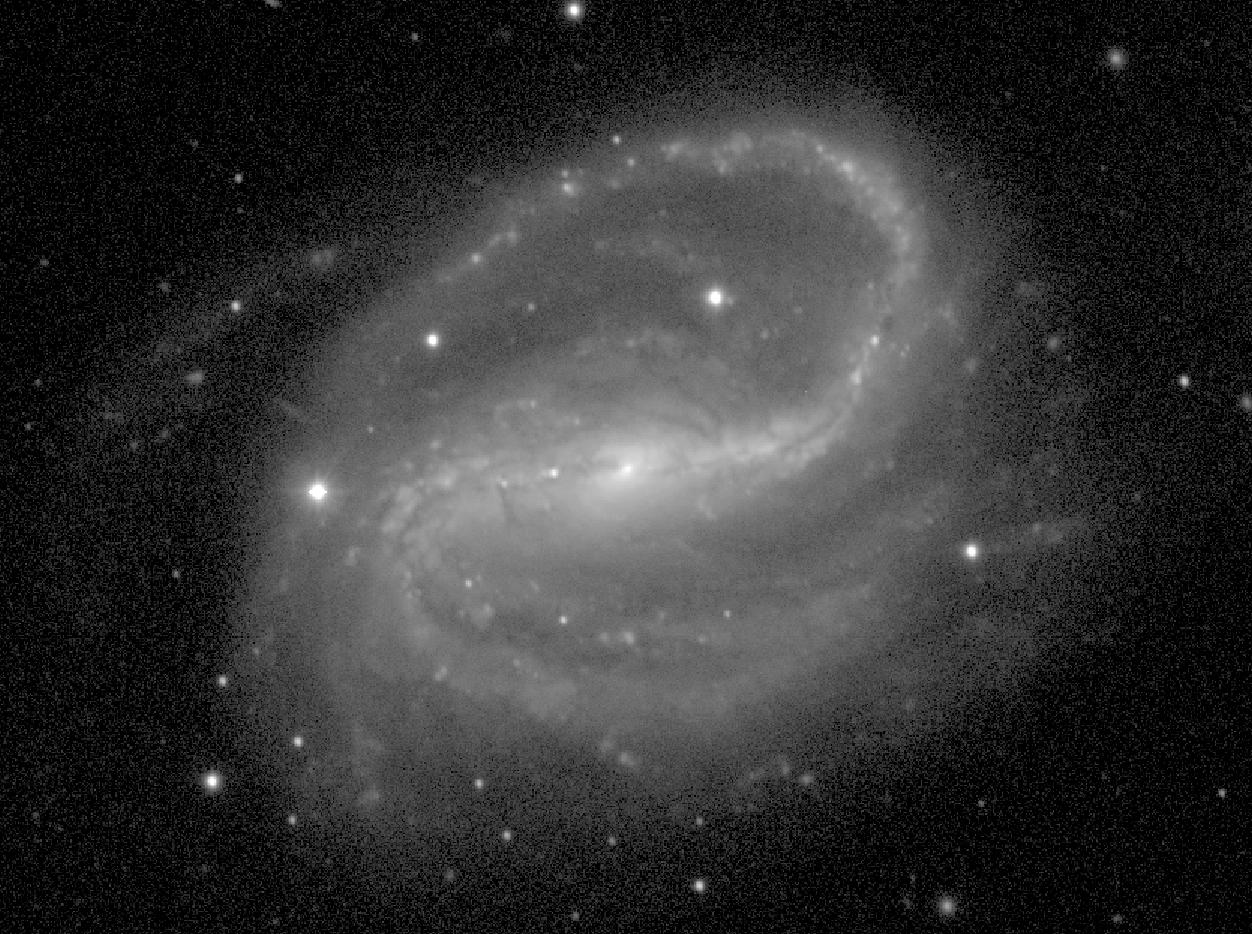

De Vaucouleurs Atlas Type: SB(s)c
Filter: g
Telescope: Pal 1.5-m
North left , East down
Field Dimensions: 5.2 x 3.9 arcminutes
RC3 Type: SB(s)c
RSA Type: SBbc(s)I-II
Surface Brightness Range Displayed: 18.5-26.5 mag per square arcsec
Absolute Blue Magnitude: -21.4
Elmegreen Spiral Arm Class: AC 9
De Vaucouleurs Atlas Description:
NGC 7479 is an ``original SBc", i.e., it was classified by Hubble as such. The Sc classification is based on the very small bulge, and the openness and patchiness of the outer arms. The bar is very well-defined, and in fact is one of the strongest known cases (Buta and Block 2001). Dust cuts directly into the small central region (HST Planetary Camera image), and the bar is so strong that there is very little offset from one side of the center to the other. Most interesting is the way the leading bar dust lanes also curve into the dominant spiral zone. These lanes are shown better in the color index map, where they are seen to lie on the concave sides of the inner parts of the arms. In the bar region, the dust distribution is very complex, as in many other bars. On both sides, there is star formation on the leading edge of the bar. Most noteworthy in this map is the apparent absence of nuclear star formation in this galaxy.
NGC 7479 has been the subject of many studies because of its strong bar and fairly simple structure. The results of several studies suggest that the galaxy has suffered a recent minor merger , based on its chemical composition distribution (Martin, Lelievre, and Roy 2000) and models of its strong morphological asymmetry (Laine and Heller 1999).